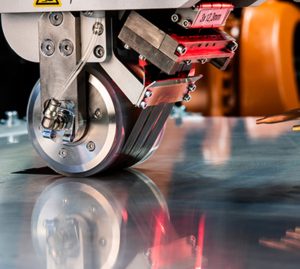Two-dimensional (2D) materials have demonstrated potential applications as electronic materials for fabricating future flexible devices. Unlike bulk materials, they exhibit characteristic physical and chemical properties, making them a research interest. Currently, there are three main methods of synthesizing 2D materials. First, most 2D materials are obtained from the exfoliation of layered bulk crystals, even though this method is inappropriate for pure metals and their alloys like ferromagnetic materials, which cannot be exfoliated into atomic layers. Second, metallic 2D materials can be chemically synthesized via different methods such as chemical vapor deposition. The third option is reducing from the 2D oxide materials, and it supports the exfoliation of metal oxides and hydroxides in chemical solutions. Ruthenium and Platinum metal nanosheets are examples of materials obtained through hydrogen or chemical reduction methods.
The choice of the method for obtaining 2D materials depends on several factors, including the type of 2D materials needed and the available methods. The above-mentioned methods have been extensively explored in the literature. Previous research has demonstrated that chemically obtained nickel hydroxide nanosheets can be directly converted to nickel oxide nanosheets through thermal decomposition. Besides, through hydrogen reduction methods, the resulting nickel oxides can be converted to metallic states. Nevertheless, despite the remarkable progress, the metallic conversions from monolayer oxides have remained a challenge. Consequently, previous research has reported difficulty evaluating the metallization processes, mainly due to the ease of re-oxidations.
To overcome the existing challenges, a team of researchers at Kumamoto University: Yuhsuke Naruo, Seita Uechi, Professor Masahiro Sawada, Professor Asami Funatsu, Professor Fuyuki Shimojo, Professor Shintaro Ida, and Professor Masahiro Hara developed a new method for the direct metallic conversion from two-dimensional nickel hydroxide nanosheets into ferromagnetic nickel-metal nanostructures by thermal annealing under vacuum conditions. Their research work is currently published in the journal, Nanotechnology.
In this approach, the experiment was carried out under vacuum conditions and at an annealing temperature of 250 °C. The nickel hydroxide nanosheets were exfoliated from layered nickel hydroxide intercalated with dodecyl ions. For the single layer of nanosheets deposited on the Si substrate, their metal transition states were investigated using a variety of sophisticated techniques such as x-ray absorption near edge structure (XANES) and Auger spectra measurements. Additionally, the x-ray magnetic circular dichroism (XMCD) measurements were performed to study the ferromagnetic behavior of the converted 2D-like nickel metal. The in-situ measurements were carried out at ultra-high vacuum to prevent surface oxidation. Comparisons were then made to the existing experimental data.
The author found that at annealing temperatures exceeding 250 °C, the XANES signals significantly changed from a multiple structure to a broad metallic structure. The metallic conversion was accompanied by the dissociation of oxygen, as revealed by the Auger measurements. The converted nickel metallic structures exhibited ferromagnetic behaviors in which the perpendicular magnetization increased with an increase in the annealing temperature. This was attributed to the structural change from the 2D-like structure to nanoparticles. Furthermore, the obtained data were consistent with the existing data.
In summary, the study was the first to report a direct metallic conversion from a monolayer hydroxide. The simple conversion method addressed the inherent challenges that have been experienced in the past to allow successful conversion of exfoliated nickel hydroxide nanosheets into metallic 2D nickel structures. The converted 2D-like nickel-metal structures exhibited ferromagnetic behaviors, making them potential candidates for various applications such as the fabrication of spintronic devices. Based on the exemplary results, the authors, in a statement to the Advances in Engineering, pointed out that the proposed conversion method can be extended for other types of monolayer hydroxide nanosheets and will thus increase more research on the field.

Dr. Masahiro Hara is an associate professor of Faculty of Advanced Science and Technology at Kumamoto University. He is also a member of Institute of Industrial Nanomaterials. Before at Kumamoto University, he was a postdoctoral researcher at RIKEN. He received his Dr. Sci. in Physics from the University of Tokyo in 2004. His current research mainly focuses on transport and magnetic phenomena in various two-dimensional materials.
.

Dr. Shintaro Ida is a professor of Institute of Industrial Nanomaterials, Kumamoto University. He received his Dr. Eng. from Kumamoto University in 2004. Prior to joining Kumamoto University in 2017, he was an associate professor of Kyushu University from 2010 to 2017, and an assistant professor of Kumamoto University from 2005 to 2009. His current research mainly focuses on development of functional materials using 2D materials.
.
Reference
Naruo, Y., Uechi, S., Sawada, M., Funatsu, A., Shimojo, F., Ida, S., & Hara, M. (2020). Ferromagnetic metal conversion directly from two-dimensional nickel hydroxide. Nanotechnology, 31(43), 435602.





